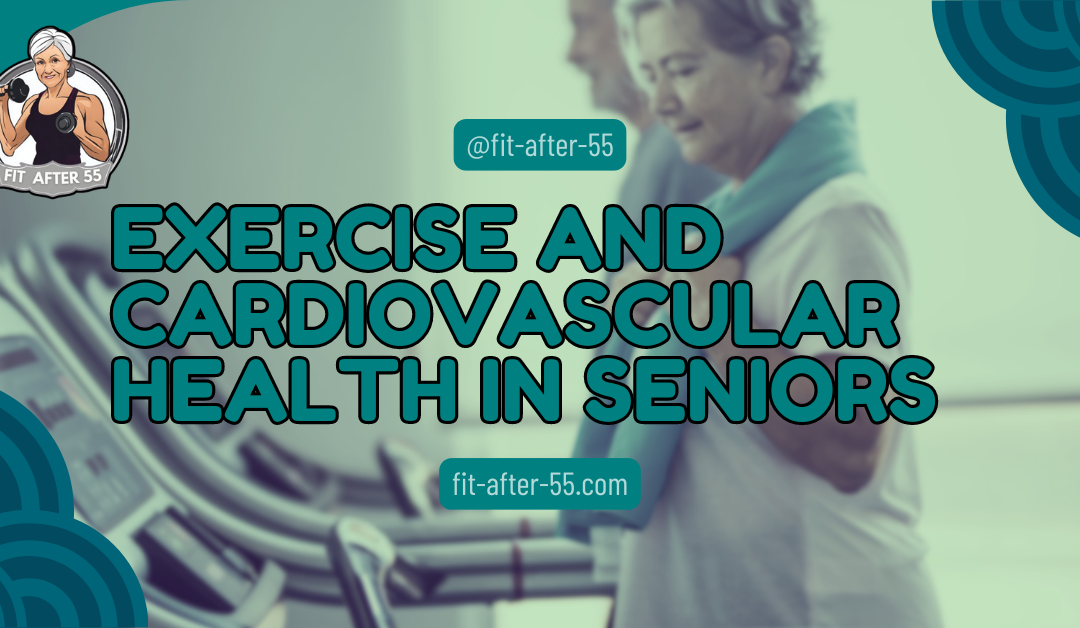Exercise and cardiovascular health in seniors is a crucial aspect of aging gracefully. As we get older, our hearts undergo changes that can affect their function. Regular physical activity, however, can significantly improve heart health, reduce the risk of heart disease, and enhance overall well-being.
Exercise and Cardiovascular Health in Seniors
Boosting Heart Wellness for Golden Years
As we age, taking care of our hearts becomes even more important. Exercise is a key part of staying healthy, especially for seniors. Regular physical activity can make your heart stronger, lower your risk of heart disease, and help you feel better overall.
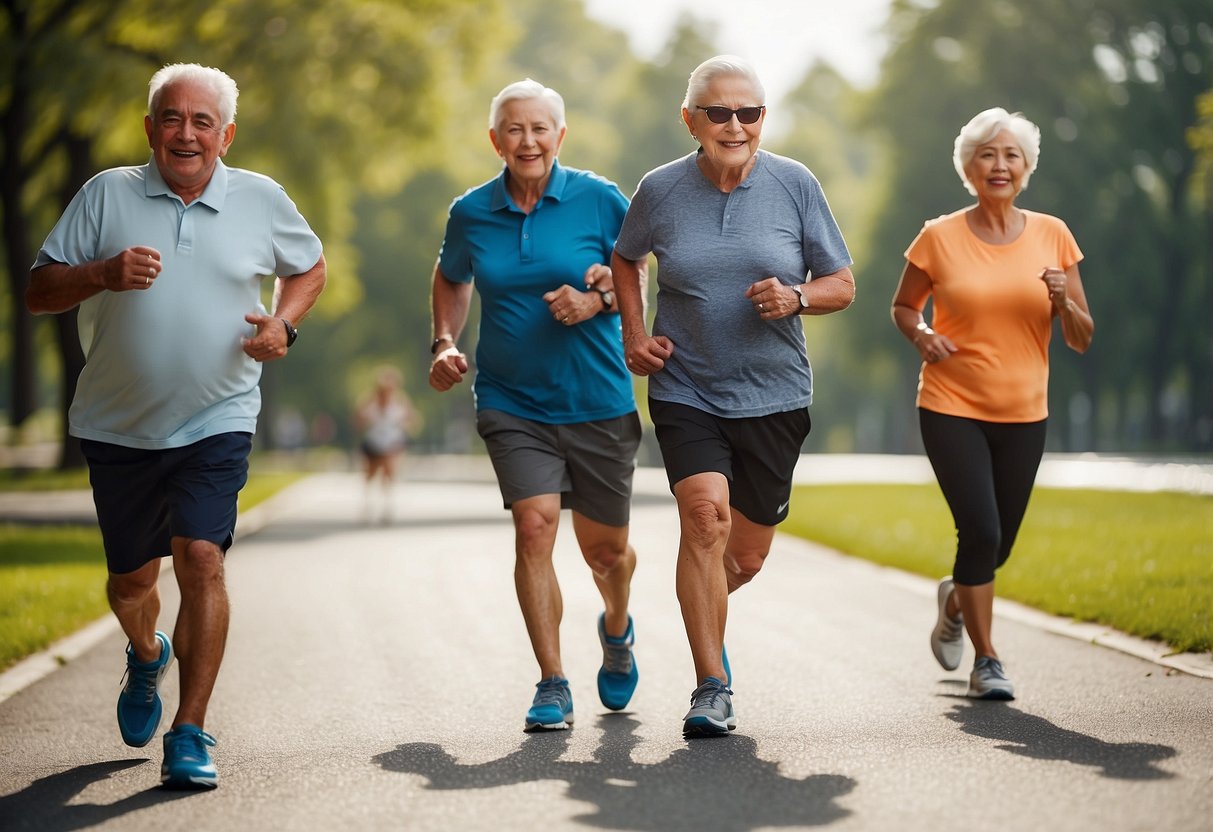
You might wonder what kinds of exercise are best for your heart. The good news is that there are many options. Walking, swimming, and dancing are all great choices. These activities get your heart pumping and can be fun too.
Exercise doesn’t have to be hard or scary. You can start small and build up over time. Even a little bit of movement each day can make a big difference for your heart health. Plus, staying active can help you keep doing the things you love for years to come.
Key Takeaways
- Regular exercise can improve heart health and lower disease risk for seniors
- Activities like walking, swimming, and dancing are great for cardiovascular fitness
- Starting small and building up gradually can lead to big improvements in heart health
Understanding Cardiovascular Health
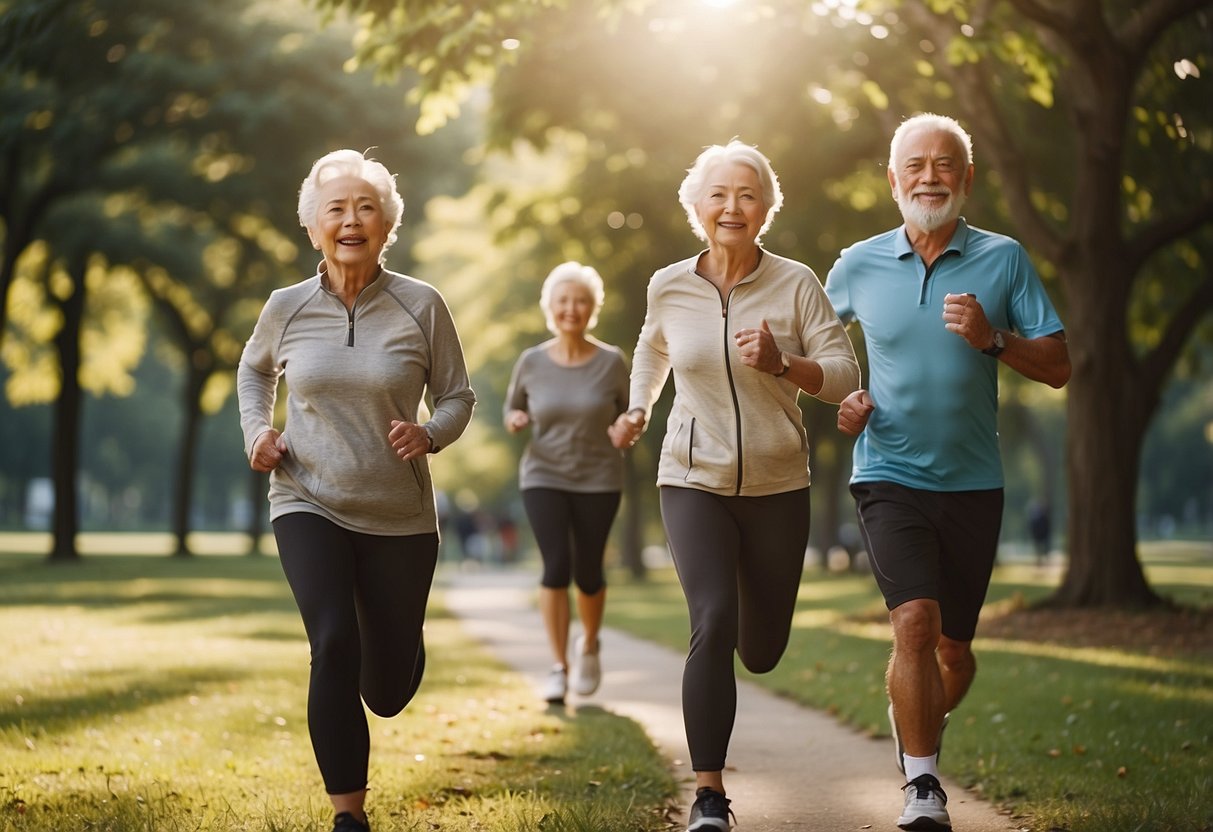
As we age, our hearts undergo changes that affect how well they work. Exercise plays a big role in keeping your heart healthy as you get older.
The Heart and Aging
Your heart changes as you age. It can’t beat as fast during exercise or stress. The walls of your heart may get thicker. Your arteries might become stiffer.
These changes can make it harder for your heart to pump blood. This can lead to high blood pressure and other heart problems.
But don’t worry! There’s good news. You can take steps to keep your heart strong. Eating well, not smoking, and staying active all help.
Regular check-ups with your doctor are key. They can spot issues early and help you stay healthy.
Impact of Exercise on the Cardiovascular System
Exercise is great for your heart at any age. When you work out, your heart gets stronger. It can pump more blood with each beat.
Regular cardio exercise helps lower your blood pressure. It can also reduce bad cholesterol and boost good cholesterol.
You don’t need to run marathons. Walking, swimming, or biking for 30 minutes a day can make a big difference. Start slow and build up over time.
Exercise also helps you manage stress. This is good for your heart too. Less stress means a happier, healthier you!
Remember to talk to your doctor before starting a new exercise plan. They can help you find safe activities that work for you.
Benefits of Exercise for Seniors
Exercise offers many advantages for older adults. It can strengthen your heart, lower your risk of heart disease, and help manage your blood pressure. Let’s explore these benefits in more detail.
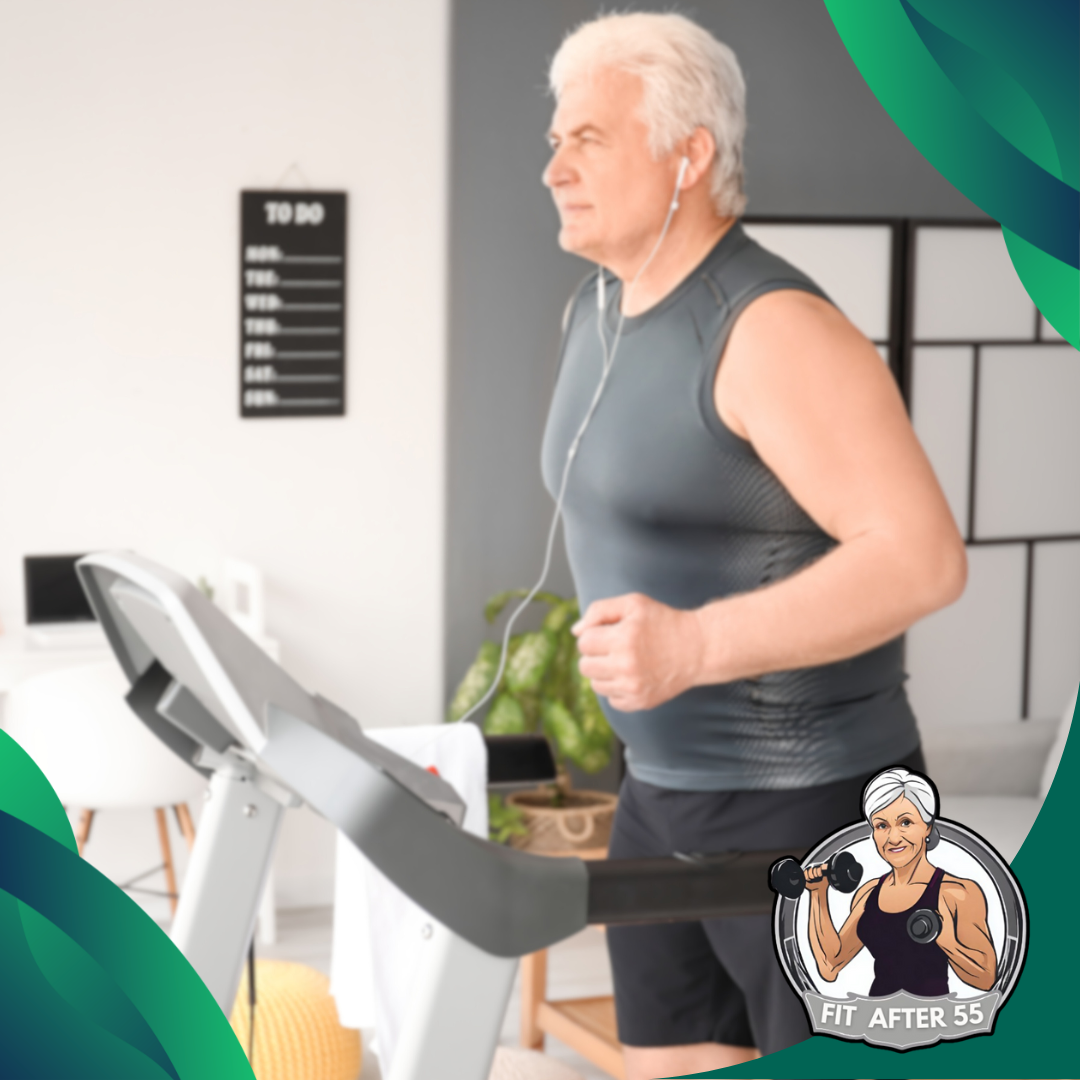
Improved Heart Function
Regular exercise makes your heart stronger and more efficient. As you work out, your heart pumps more blood with each beat. This means it doesn’t have to work as hard during daily activities.
Cardio exercise improves cardiovascular health in seniors. It boosts your stamina and endurance. You’ll find yourself able to do more without getting tired.
Try activities like brisk walking, swimming, or cycling. Even dancing can be great exercise. Aim for about 150 minutes of moderate activity each week. This can help keep your heart in top shape as you age.
Risk Reduction for Cardiovascular Diseases
Exercise helps lower your risk of heart problems. It can reduce bad cholesterol and increase good cholesterol in your blood. This protects your arteries from buildup that can lead to heart attacks.
Physical activity also helps control your weight. Being overweight puts extra strain on your heart. By staying active, you can maintain a healthy weight more easily.
Regular exercise is linked to lower cardiovascular mortality in older adults. This means you’re less likely to die from heart-related issues if you stay active.
Enhanced Circulation and Blood Pressure Management
Exercise gets your blood flowing. This improved circulation brings more oxygen to all parts of your body. It can help prevent problems like swelling in your legs and feet.
Physical activity is great for managing blood pressure. It can lower both your systolic and diastolic numbers. High blood pressure is a major risk factor for heart disease and stroke.
Moderate aerobic exercise like brisk walking or cycling is excellent for blood pressure control. Try to include some strength training too. This combination can help keep your blood pressure in check.
Recommended Exercises for Cardiovascular Health
Regular exercise is key for keeping your heart healthy as you age. A mix of different activities can help boost your heart health and overall fitness.
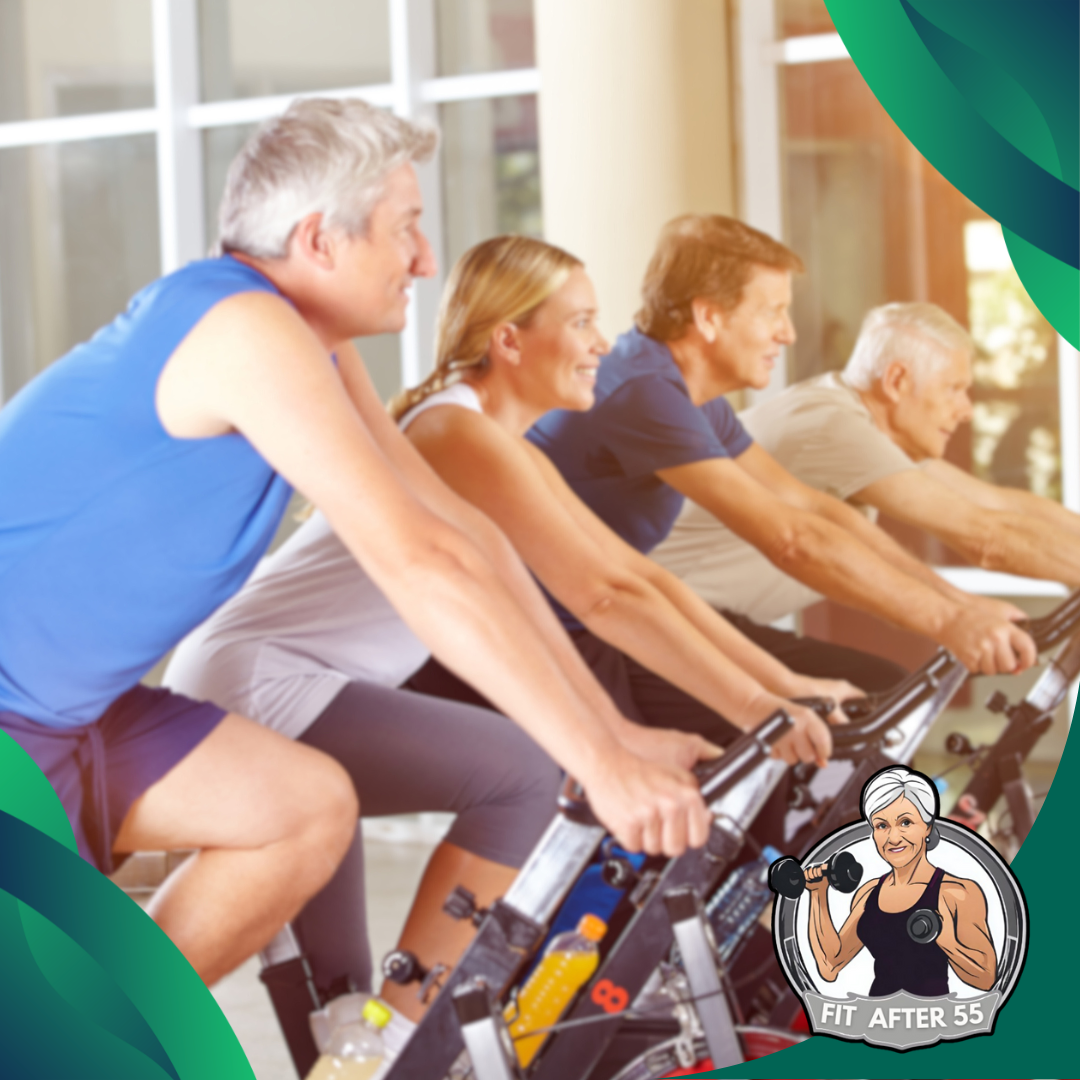
Aerobic Activities
Moderate aerobic exercise is great for your heart. You can try brisk walking, which is easy on your joints. Aim for 30 minutes a day, 5 days a week.
Swimming and water aerobics are also good choices. They’re gentle on your body but still give your heart a workout.
Cycling, either outdoors or on a stationary bike, is another option. It’s low-impact and helps build leg strength too.
Dancing is a fun way to get your heart pumping. Try a dance class or just dance at home to your favorite music.
Remember to start slow and build up over time. Listen to your body and don’t push too hard.
Strength Training
Lifting weights isn’t just for building muscle. It’s also good for your heart. You can use light dumbbells, resistance bands, or even your own body weight.
Try doing exercises like squats, lunges, and push-ups. These work multiple muscle groups at once.
Aim for strength training 2-3 times a week. Start with 1 set of 10-15 repetitions for each exercise.
As you get stronger, you can add more sets or use heavier weights. Always use proper form to avoid injury.
Strength training helps your body gain more lean muscle. This improves your metabolism, which is good for your heart.
Flexibility and Balance Exercises
Stretching and balance exercises might not get your heart racing, but they’re still important. They help prevent falls and keep you moving easily.
Try gentle yoga or tai chi. These combine stretching, balance, and relaxation. They can also help lower stress, which is good for your heart.
Simple stretches can be done daily. Hold each stretch for 10-30 seconds. Don’t bounce or force the stretch.
Practice standing on one foot to improve balance. You can hold onto a chair for support at first.
Aim to do flexibility exercises every day. For balance exercises, try to do them 3 times a week.
Exercise Guidelines for Seniors
Regular exercise is key for seniors to stay healthy and active. Here are some important guidelines to follow for safe and effective workouts.
Frequency and Intensity
You should aim to exercise 3-5 days a week. Mix up moderate and vigorous activities to keep things interesting.
Moderate exercise includes:
- Brisk walking
- Water aerobics
- Gardening
Vigorous exercise includes:
- Jogging
- Swimming laps
- Dancing
Start slow if you’re new to exercise. Gradually increase your workout time and intensity as you get stronger. Listen to your body and don’t push too hard.
Duration and Type
Aim for at least 150 minutes of moderate exercise each week. This breaks down to about 30 minutes a day, 5 days a week.
Try to include different types of exercise:
- Cardio: Improves heart health
- Strength training: Builds muscle
- Balance: Prevents falls
- Flexibility: Keeps you limber
Mix it up to work different muscle groups and keep things fun. You can split your exercise into shorter 10-15 minute sessions throughout the day if that’s easier.
Safety and Precautions
Always check with your doctor before starting a new exercise program. This is especially important if you have any health issues or take medications.
Warm up before exercise and cool down after. This helps prevent injuries. Wear comfortable, supportive shoes and loose-fitting clothes.
Stay hydrated by drinking water before, during, and after your workout. Exercise in a safe environment. Use proper equipment and ask for help if you’re unsure how to use it.
Stop exercising if you feel pain, dizziness, or shortness of breath. Building strength and endurance takes time, so be patient with yourself.
Challenges and Solutions
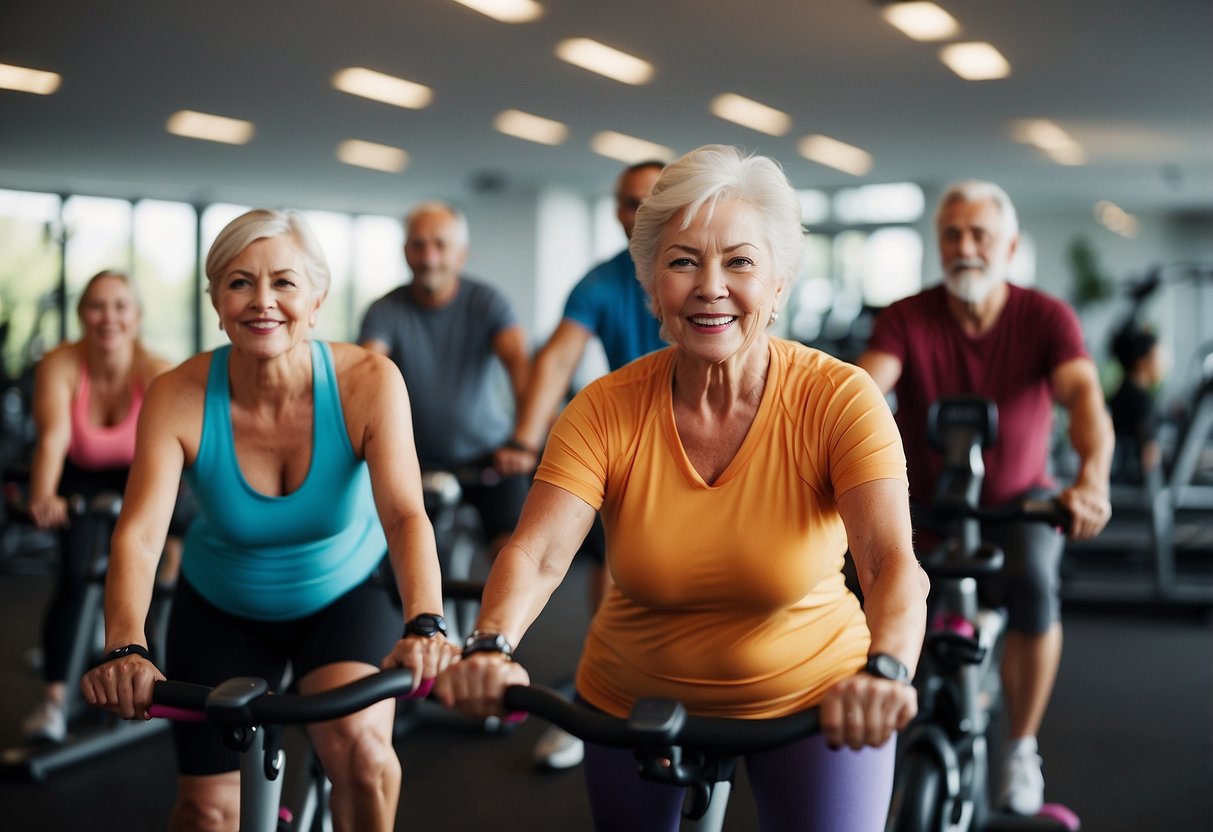
Staying active as a senior can be tough. But with the right approach, you can overcome obstacles and find ways to exercise safely.
Overcoming Barriers to Exercise
Fear of injury or falls might hold you back from working out. To stay safe, start slow and build up gradually. Try low-impact activities like swimming or walking. These are easier on your joints.
Lack of motivation can be another hurdle. Set small, achievable goals to keep yourself inspired. Exercise with a friend or join a seniors’ fitness class for social support.
If you have health issues, talk to your doctor. They can help you find safe ways to stay active. Remember, even light exercise is better than none at all.
Adapting Exercises for Different Fitness Levels
Your fitness level is unique to you. Listen to your body and adjust exercises as needed. If standing is hard, try seated exercises. Chair yoga or arm curls with light weights can be great options.
For cardio workouts, start with short sessions. Even 5-10 minutes can make a difference. Gradually increase your time as you get stronger.
Water exercises are excellent for seniors. The buoyancy helps reduce stress on your joints. Try water walking or aqua aerobics classes.
Remember to include balance exercises. These can help prevent falls. Simple activities like standing on one foot while holding a chair can improve your stability.
Nutrition and Hydration

Eating well and staying hydrated are key for seniors who exercise. A balanced diet and proper fluid intake help support your workouts and keep you healthy.
Dietary Considerations for Active Seniors
As you age, your nutritional needs change. Eating enough protein is crucial to maintain muscle mass. Aim for lean meats, fish, eggs, and plant-based proteins like beans and nuts.
Don’t forget carbs! They fuel your workouts. Choose whole grains, fruits, and veggies for lasting energy.
Calcium and vitamin D are vital for bone health. Low-fat dairy, leafy greens, and fortified foods can help meet your needs.
Omega-3 fatty acids support heart and brain health. Try to eat fatty fish twice a week or consider a supplement.
Remember to eat colorful fruits and veggies. They’re packed with antioxidants that fight inflammation and boost your immune system.
The Importance of Hydration During Exercise
Staying hydrated is crucial, especially when you’re active. Dehydration can cause fatigue, dizziness, and muscle cramps.
Drink water before, during, and after exercise. Don’t wait until you feel thirsty – that’s often a sign you’re already dehydrated.
Sports drinks can help replace electrolytes lost through sweat during longer workouts. But be mindful of added sugars.
Eating water-rich foods like cucumbers, watermelon, and oranges can also boost your fluid intake.
Limit alcohol and caffeine, as they can contribute to dehydration.
Keep a water bottle handy and sip throughout the day to stay on top of your hydration needs.
Monitoring Progress and Health
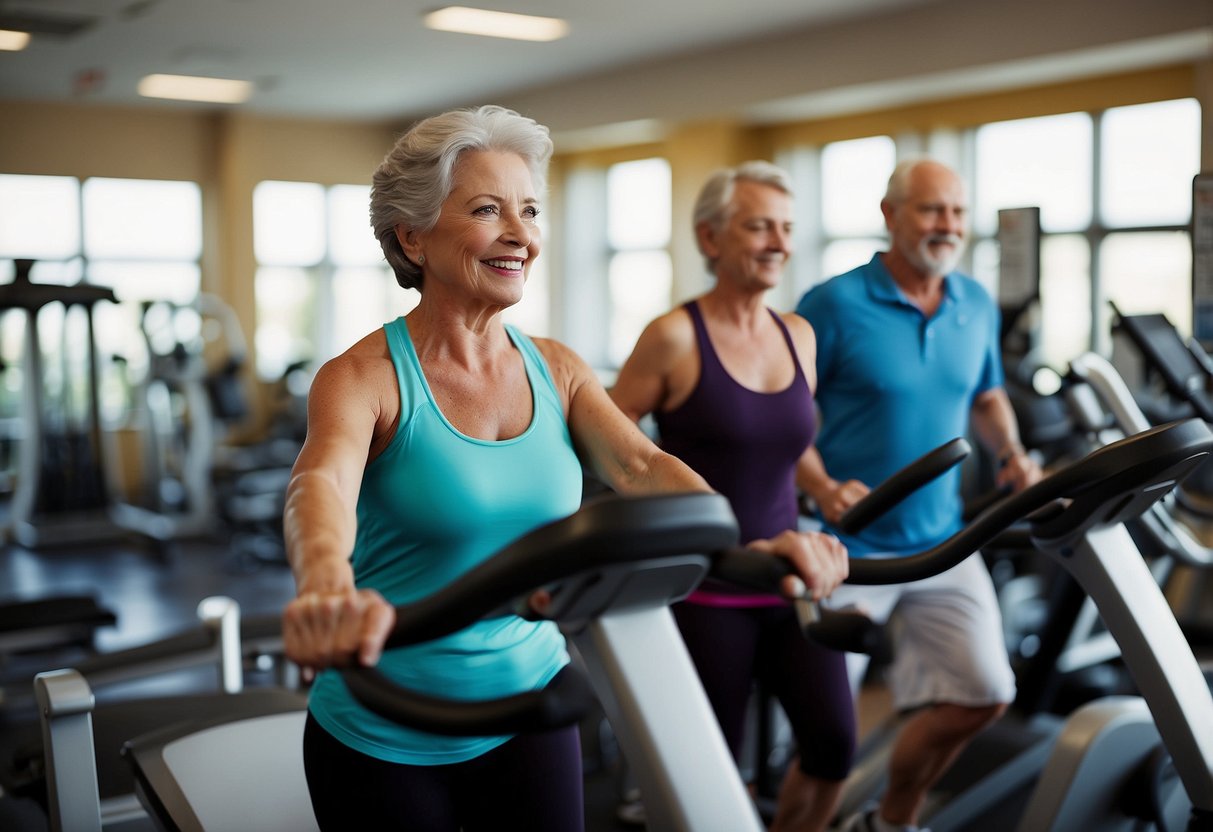
Keeping track of your exercise and heart health is key for seniors. Regular check-ups help spot issues early and guide your fitness plan.
Tracking Exercise and Heart Health
Heart rate monitors are great tools for seniors to watch their heart health. Many fitness trackers have this feature built-in. They help you stay in safe heart rate zones while working out.
You can also use a fitness watch to count your steps and track your activity levels. This gives you a clear picture of how active you are each day.
Write down your workouts in a journal. Note how long you exercised and how you felt. This helps you see your progress over time.
Regular Check-Ups and Tests
See your doctor for check-ups at least once a year. They can do tests to check your heart health and fitness level.
Your doctor might do a stress test to see how your heart works during exercise. They can also check your blood pressure and cholesterol levels.
Ask about getting an electrocardiogram (ECG). This test looks at your heart’s electrical activity and can spot any issues.
Don’t skip these check-ups. They help make sure your exercise plan is safe and working well for you.
Community and Support
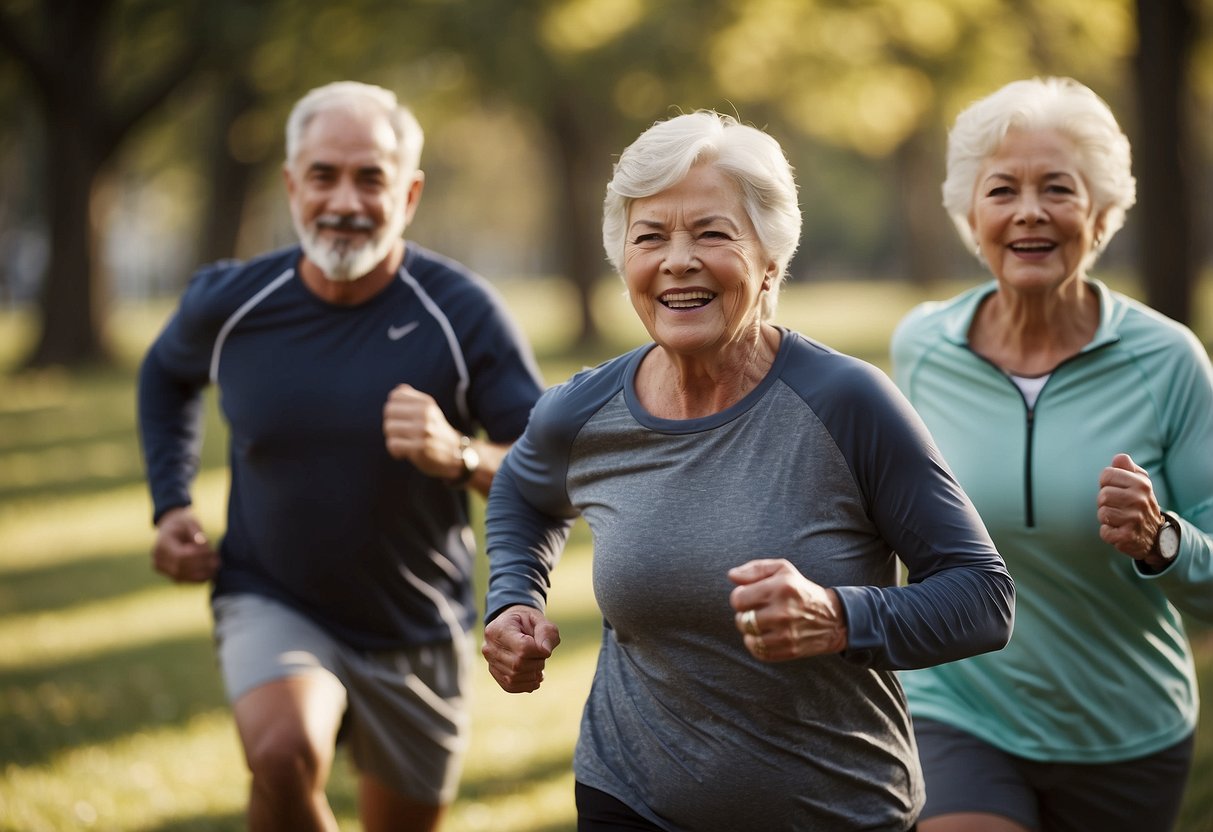
Social connections play a key role in helping seniors stay active and healthy. Having a support network can boost motivation and make exercise more enjoyable.
Finding Exercise Groups and Partners
Look for local senior centers or community programs that offer group fitness classes for older adults. Many have options like low-impact aerobics, yoga, or water exercises. These classes let you meet others with similar goals.
Ask friends or neighbors if they’d like to be walking buddies. Having a regular exercise partner helps you stick to a routine. You can keep each other accountable and make workouts more fun.
Check if your local park has outdoor fitness equipment designed for seniors. This can be a great place to meet others and exercise together in the fresh air.
Family and Caregiver Support
Talk to your family about your exercise goals. Let them know how important staying active is for your health. Ask if they’d like to join you for walks or other activities sometimes.
If you have a caregiver, discuss ways they can help you stay active. They might be able to assist with transportation to exercise classes or join you for light workouts at home.
Create an exercise calendar and put it where family members can see it. This keeps your goals visible and lets others encourage you.
Ask loved ones to check in on your progress. Their interest and support can be very motivating as you work to improve your heart health through exercise.
The Future of Senior Fitness
New research and technology are changing how older adults exercise. These advances will make fitness more fun, safe, and effective for seniors in the years to come.
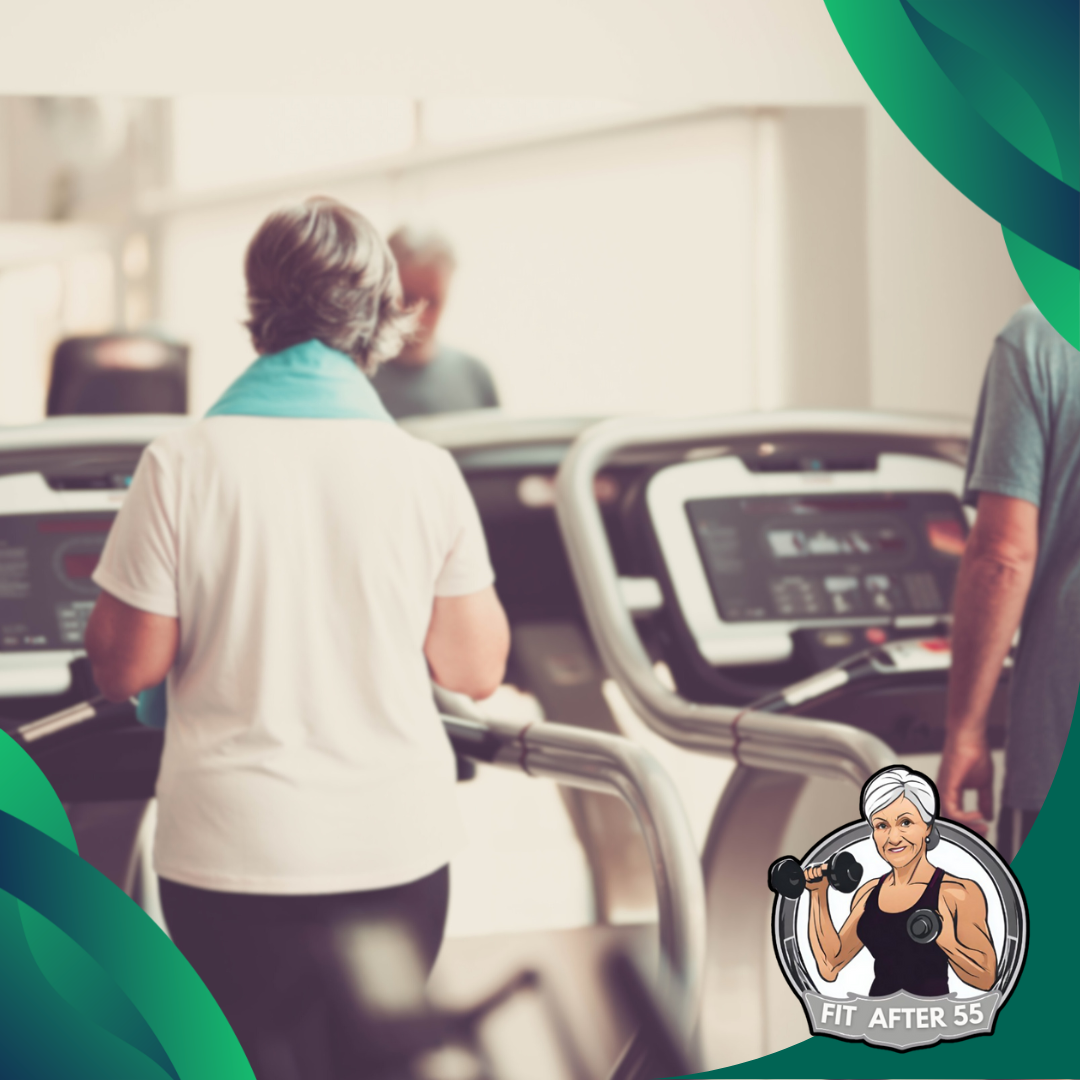
Emerging Research on Exercise and Aging
Scientists are learning more about how exercise affects aging bodies. Studies show that regular physical activity can lower the risk of heart disease and stroke in people over 60. This is great news for your heart health!
Research is also looking at how exercise impacts your brain. Some findings suggest that 30 minutes of daily exercise may reduce signs of Alzheimer’s disease. This could help keep your mind sharp as you age.
Scientists are exploring new types of workouts too. They want to find the best exercises for older adults. This research will help create better fitness plans for you in the future.
Technological Advancements in Fitness for Seniors
Technology is making exercise easier and more fun for older adults. Smart watches and fitness trackers can help you monitor your heart rate and count your steps. This lets you see how active you are each day.
Virtual reality is another exciting area. It can make workouts feel like games or adventures. Imagine riding a bike through a beautiful forest, all from the comfort of your living room!
Apps are also becoming more senior-friendly. They offer workouts designed just for older adults. Some even connect you with personal trainers who can guide you through exercises online.
As technology improves, you’ll have more ways to stay fit that are safe, enjoyable, and tailored to your needs.
Exercise and Cardiovascular Health in Seniors
In conclusion, we have explored the vital role of exercise in maintaining cardiovascular health for seniors. From understanding the changes our hearts undergo as we age to discovering the numerous benefits of regular physical activity, we have covered a wide range of topics.
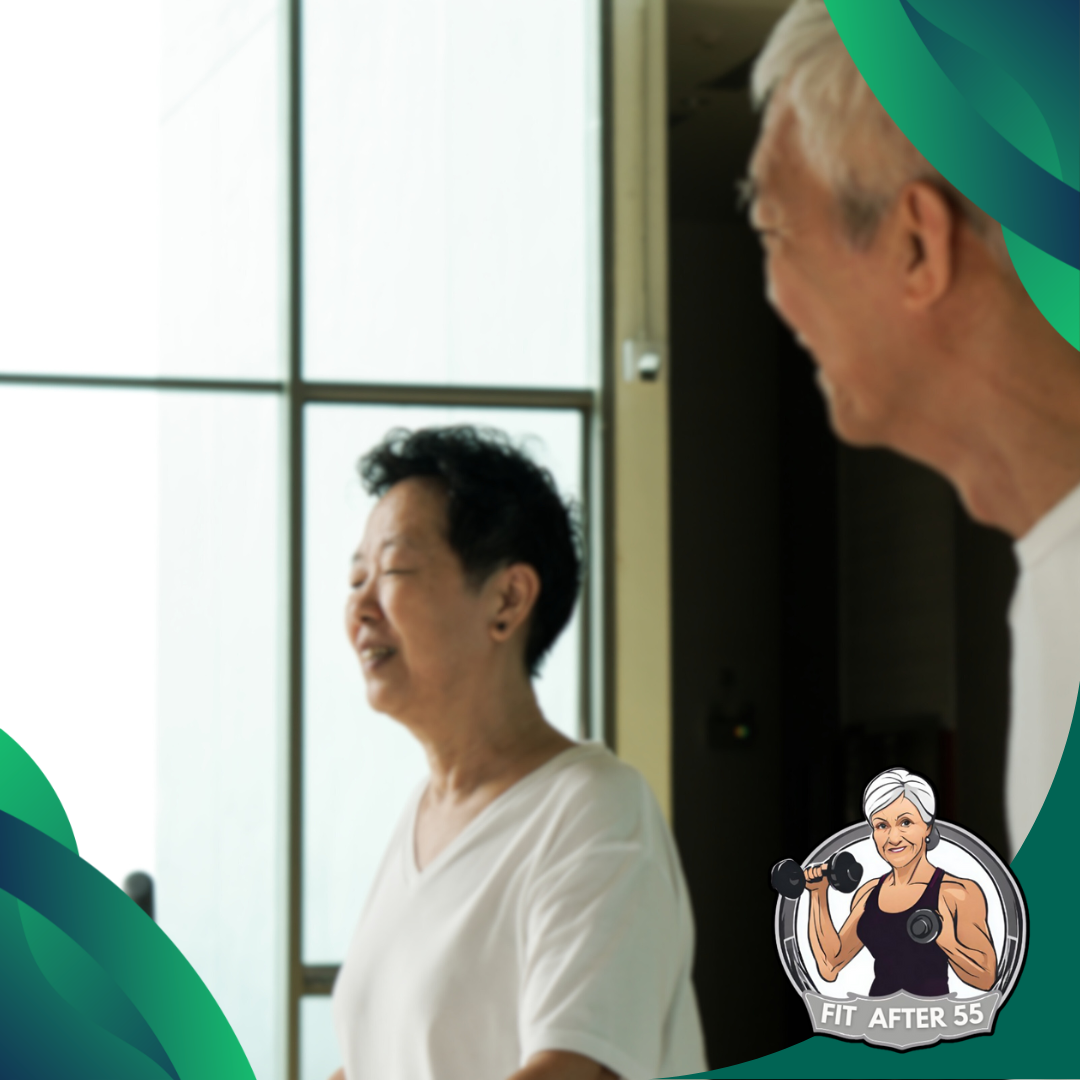
By incorporating a variety of exercises, such as aerobic activities, strength training, flexibility exercises, and balance exercises, seniors can significantly improve their heart health. These activities not only strengthen the heart muscle but also help manage blood pressure, reduce the risk of heart disease, and enhance overall quality of life.
Remember, starting small and gradually increasing your activity level is key. Always consult with your healthcare provider before beginning a new exercise regimen. By prioritizing exercise and maintaining a healthy lifestyle, seniors can enjoy a vibrant and fulfilling life well into their golden years.
Frequently Asked Questions
Seniors can benefit greatly from cardiovascular exercise. It’s important to choose the right activities and take proper precautions. Let’s look at some common questions about exercise and heart health for older adults.
What are the best forms of cardiovascular exercise for older adults?
Walking, swimming, and cycling are great options for seniors. These low-impact activities are easy on the joints. You can also try water aerobics or using an elliptical machine.
Pick exercises you enjoy. This will help you stick with your routine. Start slow and build up over time.
How does aging affect heart function and overall cardiovascular health?
As you age, your heart doesn’t pump as efficiently. Your arteries may become less flexible. This can lead to high blood pressure.
Your risk for heart disease increases with age. Regular exercise can help counteract some of these effects.
What types of exercise contribute to a senior's cardiovascular well-being?
Aerobic exercises are key for heart health. This includes brisk walking, jogging, or dancing. Strength training also helps by building muscle and improving metabolism.
Balance exercises like tai chi can improve overall fitness. They help prevent falls, which is important for seniors.
Are there specific cardiovascular concerns for the elderly when engaging in physical activity?
Older adults may have a higher risk of heart problems during exercise. Your heart rate and blood pressure responses can change with age.
It’s important to start slowly and listen to your body. Stop if you feel chest pain, shortness of breath, or dizziness.
How can cardiovascular health in seniors be improved through exercise?
Regular exercise can lower your blood pressure and cholesterol. It helps control weight and reduces stress.
Aim for 150 minutes of moderate activity per week. This can be broken into shorter sessions if needed.
What precautions should be taken when elderly individuals with heart disease exercise?
Talk to your doctor before starting a new exercise program. They can help you create a safe plan based on your health.
Start with short, easy sessions. Gradually increase intensity and duration. Always warm up and cool down. Stop if you feel pain or extreme fatigue.
Wear comfortable shoes and exercise in a safe environment. Stay hydrated and avoid extreme temperatures.
Want to Keep Your Heart Happy and Healthy After 55?
Staying active is key! Visit our website, fit-after-55.com, for engaging fitness tips, product reviews, and inspiration to keep you moving. Join our supportive community on Facebook to connect with like-minded individuals and make fitness fun!

